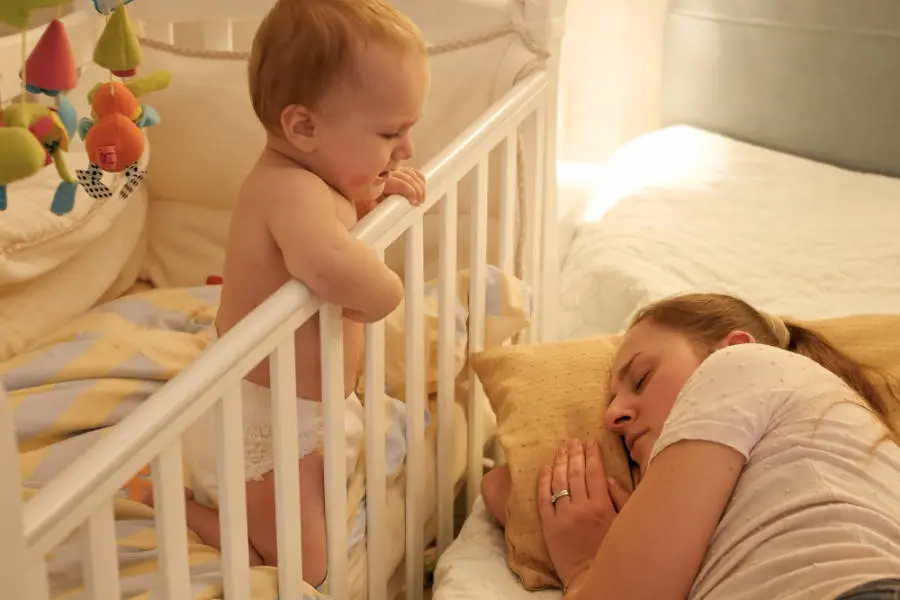The Do’s and Don’ts of Sharing a Room with Your Baby: A Parent’s Guide

Being a pediatric sleep consultant who has worked with hundreds of parents and a mom myself, I recognize that sharing a room with your baby can be a comforting yet challenging experience. The American Academy of Pediatrics (AAP) recommends room sharing for at least the first six months, ideally up to one year, due to its benefits. However, it’s crucial to approach this period with a balanced strategy that supports restful sleep for everyone involved. Here’s a guide to the do’s and don’ts of room sharing.
The Do’s of Room Sharing
Use White Noise:
If you notice that your baby—or you—are disturbed by every little noise, a white noise machine might be beneficial. A low-level white noise machine can help drown out any sounds you or your partner make during the night, creating a calming environment similar to the womb, which may help your baby sleep more soundly.
Create a Barrier:
As your baby grows, particularly around the 6-month mark, they may become more aware of your presence and wake up more frequently. To minimize disturbances, consider setting up a screen, curtain, or partition between your bed and your baby’s sleep space. This small sense of separation can help everyone sleep more peacefully.
Stick to a Routine:
Consistency is key when sharing a room. Establish a regular bedtime routine to signal to your baby that it’s time to sleep, regardless of where they are. Whether it’s a bath, story, or lullaby, maintaining the same routine each night can make bedtime easier and help your baby learn to sleep and settle without needing you in the room.
Consider an Earlier Transition:
While the AAP recommends room sharing for up to a year, many sleep experts suggest that transitioning your baby to their own room around six months can improve sleep quality for both you and your baby. If your baby starts waking more frequently because of your proximity, it might be a sign that they’re ready for their own sleep space.
The Don’ts of Room Sharing
Don’t Co-Sleep:
Remember, room sharing means sharing the same room, not the same bed. Co-sleeping significantly increases the risk of SIDS and other sleep-related dangers. Your baby should have their own safe sleep space, with a firm mattress and no loose bedding or pillows.
Don’t Ignore the Signs:
If your baby is waking more often because they can see or hear you, it may be time to consider moving them to their own room, even if it’s sooner than you planned. Frequent night wakings can disrupt everyone’s sleep and lead to overtiredness, which is tough for both baby and parents.
Don’t Neglect Your Own Sleep:
Your sleep is just as important as your baby’s. If room sharing is causing significant sleep disruptions for you, it’s worth re-evaluating your sleeping arrangement. Well-rested parents are better equipped to care for their baby during the day.
Don’t Rely Solely on Room Sharing for Safety:
While room sharing can reduce the risk of SIDS, it’s just one element of safe sleep practices. Always place your baby on their back to sleep, use a firm sleep surface, and avoid soft bedding or stuffed animals in the crib.
Finding the Right Balance
Room sharing can be a wonderful way to keep your baby close and safe during the early months, but it’s essential to find a balance that suits your family. While sleep experts suggest that everyone ideally has their own sleep space, this isn’t always feasible. By implementing strategies like using white noise and creating a small barrier between you and your baby, you can enhance the quality of sleep for everyone involved.
Remember, your family’s well-being is the priority. If room sharing is the best option for your situation, know that you can make it work. And when the time is right, transitioning your baby to their own room can be a positive step for everyone’s sleep health. As your trusted child sleep consultant, I’m here to support you through every stage of this journey.
– Sara




